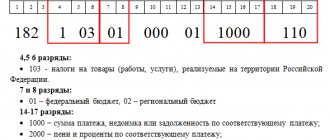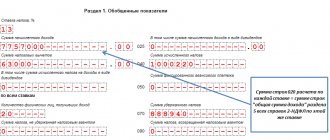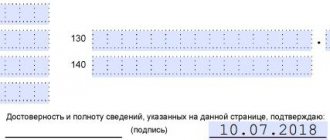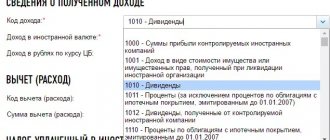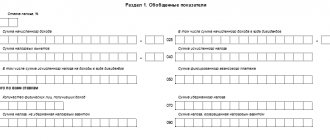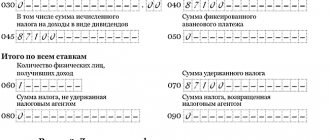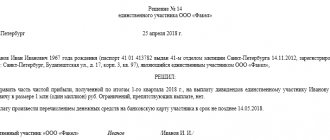The current declaration form and new requirements for completion have been taken into account
Let us immediately note that the program in question allows you to fill out 3-NDFL for 2017, taking into account all the requirements established by the basic order of the Tax Service of Russia dated December 24, 2014 No. ММВ-7-11/671 (hereinafter referred to as Order No. ММВ-7-11/671 ) in the latest edition – dated 10/25/2017. Let us remind you that they are assigned:
- declaration form 3-NDFL for 2021;
- electronic file format with this report;
- rules for filling out the declaration form.
Thus, in the “Declaration 2017” program, it is almost impossible to fill out 3-NDFL in 2018 in violation of current requirements. After all, it contains:
- The most current declaration form, similar to the paper version.
- The corresponding filling algorithm takes into account the presence of all mandatory details, as well as the latest changes to Order No. ММВ-7-11/671.
Also see "".
Preparation of documents for filing a declaration via the Internet
To submit the 3rd personal income tax declaration online you need to prepare:
- Declaration file in xml format.
- Scanned copies of additional documents.
Declaration file in xml format
First of all, you need to fill out a declaration using the “Declaration” program. If you have not done this yet, I recommend studying the following instructions:
Instructions for filling out a tax return
After you have completed filling out the declaration, you need to save it in xml format. It's quite easy to do this:
Click on the "xml file" button at the top of the program window. After that, select the folder where the file will be saved and click the “OK” button.
Preparation of copies of additional documents
All documents that need to be attached to the declaration are additional.
For example, when selling a car, you need to attach 2 sales agreements to the declaration (one for the purchase of the car, and the second for the sale).
When receiving a deduction for training in a driving school, additional documents may include a training agreement with a driving school, cash receipts, a driving school license, a 2-NDFL certificate, and an application for a personal income tax refund.
All necessary documents should be scanned and placed in a separate folder.
Please note that the tax office imposes a 20 MB on the total size of uploaded files, so I recommend scanning documents with a resolution of 150 dpi and saving them in jpg format.
What does the application from the Federal Tax Service do?
Before you fill out the 3-NDFL declaration in the program, it is important to understand that it will automatically generate the declaration sheets necessary for your case based on the information you entered.
Simply put, the final version of your 3-NDFL will include as many sheets as needed. The Federal Tax Service will automatically skip any unnecessary applications.
The standard 3-NDFL form from 2021 includes 20 sheets. The final version will include the least of them if you declare only income and do not declare deductions. But with deductions the number of sheets will be greater.
Also see “Download the 3-NDFL declaration for 2021 to fill out.”
After filling out the 3-NDFL through the program, it will generate the sheets itself:
- for all taxable income from domestic and foreign sources;
- by income from business and private practice;
- data for calculating professional deductions for royalties and civil contracts;
- property deductions;
- data for calculating the tax base for transactions with securities, financial instruments of futures transactions and taxable income from participation in investment partnerships;
- for calculating standard, social and investment deductions (+ losses on securities and financial instruments).
Most importantly, the instructions for filling out 3-NDFL through the program assure that the application has built-in:
- control of entered data for their availability (mandatory details);
- checking their correctness.
Also see “Installing the “Declaration” program for filling out 3-NDFL for 2021: instructions.”
Sample of filling out Appendix 1 (income from sources in the Russian Federation) of the 3-NDFL tax return for 2021
- Sheet A calculates the amount of income received by the taxpayer from all sources in the Russian Federation, and the corresponding amounts of tax calculated and withheld at the source of payment of income for the tax period.
- Sheet A indicates the amount of income from all sources of payment.
- On Sheet A the following indicators are indicated separately for each source of income payment and for each tax rate:
- In Sheet A, taxpayers indicate income received during the tax period from sources in the Russian Federation:
- Taxpayers recognized as refugees or granted temporary asylum on the territory of the Russian Federation in accordance with Federal Law of February 19, 1993 N 4528-1 “On Refugees” (Rossiyskaya Gazeta, 1997, June 3; Collection of Legislation of the Russian Federation, 2013, N 27, Art. 3477) indicate in relation to income from labor activities received from the moment they are recognized as refugees or received temporary asylum on the territory of the Russian Federation, but not earlier than January 1, 2014, when filling out line 010 of Sheet A, a tax rate of 13 percent.
If information regarding income does not fit on one page, then fill out the required number of pages of Sheet A.
in line 010 - the tax rate applied to income in accordance with the provisions of Article 224 of the Code;
in line 020 - code of the type of income (in accordance with Appendix No. 4 to this Procedure);
in line 030 - TIN of the source of income payment;
in line 040 - checkpoint of the source of income payment;
in line 050 - OKTMO code of the source of income payment;
in line 060 - name of the source of income payment (if the source of income payment is an individual, then the surname, first name, patronymic, TIN (if any) of the individual who paid the income is indicated);
in line 070 - the amount of income received from this source;
in line 080 - the amount of taxable income;
in line 090 - the amount of tax calculated for payment;
in line 100 - the amount of tax withheld (if the person - the source of payment of income - is a tax agent).
a) taxed at a tax rate of 13 percent, with the exception of income from business, advocacy and private practice reflected in Sheet B;
b) taxed at a tax rate of 35 percent and received in the form of:
the value of any winnings and prizes received during the tax period in competitions, games and other events for the purpose of advertising goods (work, services), insofar as they exceed the amounts specified in paragraph 28 of Article 217 of the Code;
interest income on deposits in banks, to the extent that they exceed the amounts specified in Article 214.2 of the Code;
amounts of savings on interest when receiving borrowed (credit) funds, in terms of exceeding the amounts specified in paragraph 2 of Article 212 of the Code;
in the form of payment for the use of funds of members of a consumer credit cooperative (shareholders), as well as interest for the use by an agricultural credit consumer cooperative of funds raised in the form of loans from members of an agricultural credit consumer cooperative or associated members of an agricultural credit consumer cooperative, insofar as they exceed the amounts specified in Article 214.2.1 of the Code;
c) taxed at a tax rate of 30 percent and received by taxpayers who are not tax residents of the Russian Federation, with the exception of income specified in paragraph 3 of Article 224 of the Code;
d) taxed at a tax rate of 15 percent and received by taxpayers who are not tax residents of the Russian Federation in the form of dividends from equity participation in the activities of Russian organizations;
e) taxed at a tax rate of 9 percent and received in the form of:
dividends from equity participation in the activities of organizations received in the form of dividends by individuals who are tax residents of the Russian Federation;
interest on mortgage-backed bonds issued before January 1, 2007, as well as on the income of the founders of the trust management of mortgage coverage received on the basis of the acquisition of mortgage participation certificates issued by mortgage coverage managers before January 1, 2007.
Where to begin
Find the following icon on your desktop and launch it:
As a rule, filling out 3-NDFL in the “Declaration 2017” program does not cause much difficulty, since its interface is quite simple and understandable. For example, the main screen you will have to work with looks like this:
To understand how to correctly fill out 3-NDFL in the program, it is important to understand the general principle: first enter individual information, and then this application from the Federal Tax Service will collect it together. It's almost impossible to miss anything. After all, if some required data is missing, the program simply will not generate your 3-NDFL for 2017.
Our instructions on how to fill out 3-NDFL in 2021 in the program from the Federal Tax Service would be incomplete if we did not tell you about the main options that you will have to work with when filling out the report.
Toolbar
It looks like this:
This is access to various main menu functions. You just need to click on the desired button once. If anything, a hint under the mouse arrow will help you figure it out. Essentially, these are step-by-step rules for filling out 3-NDFL in the program.
Main menu
It looks like this:
When you select “File”, a submenu with the following content will appear:
Here the rules for filling out the 3-NDFL declaration in the program from the Federal Tax Service of Russia allow you to:
| Possibilities of the “File” submenu | |
| Option | What gives |
| Create | Generates a new declaration. At the same time, if another declaration is open at the same time and changes are made to it, but not saved, a proposal to save them will appear. According to the instructions, the 3-NDFL program begins each start with the creation of a new declaration. That is, you can enter and change data. |
| Open | Makes it possible to open a file with 3-NDFL, which was previously entered and saved. At the same time, if another declaration is open at the same time and changes are made to it, but not saved, a proposal to save them will appear. |
| Save | Allows you to save the active declaration to a file |
| Save as… | Prompts for the name and location of the file to save |
| Exit | Allows you to leave the program |
Please note: all these options are duplicated on the toolbar.
Important instructions when filling out 3-NDFL in the program: if, after selecting the Create/Open/Save/Exit options, the request to save changes was confirmed, but you did not enter a file name, a dialog will still appear asking for the name and location of the new file. That is, the entered data will not disappear anywhere.
When you select the “Declaration” item, the following submenu will appear:
| Possibilities of the “Declaration” submenu | |
| Option | What gives |
| View | Preview of the generated declaration in the form and volume in which it will be printed if “Print” is selected |
| Seal | Printing the selected 3-NDFL |
| Export | Moves the data of the current declaration to a file in the format approved by the Federal Tax Service (xml) for sending to the Federal Tax Service |
| Check | Analysis of the generated declaration for completeness and compliance of the entered data |
Please note: all these options are duplicated on the toolbar.
When you select “Settings” you will see:
It allows you to enable or disable:
- show toolbar;
- displaying labels under buttons on the toolbar.
When you select Help, a submenu will appear:
Here:
- “Help” – call up comments to the program (can also be opened with the F1 key);
- “About the program” – its version and technical support contacts.
Navigation bar
It shows the topic section you are completing. Just click on it once.
Please note that according to the instructions for the 3-NDFL “Declaration” program, some buttons may not be available. This depends on what conditions you initially set (“Set Conditions”).
Main window
It is here that you need to enter and edit the basic information that will go into the 3-NDFL report:
Please note that compared to last year’s version of this program, in 2021 a field for indicating OKTMO has appeared (see above).
Also see “Which OKTMO to indicate in 3-NDFL”.
The internal instructions for filling out the 3-NDFL declaration in the program indicate that when launched, the application automatically generates an “empty” declaration. And at any time you can:
- save the entered data to disk;
- load a previously saved declaration;
- create a new one.
The title will show the name you gave to the file with 3-NDFL.
3-NDFL fill out
Drawing up a tax return in a special program does not cause any difficulties. The interface is intuitive.
Filling out begins with the “Set conditions” tab. Initially, it notes that they are drawing up a 3-NDFL declaration. If the declaration is filled out by a non-resident, he checks the corresponding item “3-NDFL non-resident”. Then enter the following data:
- Inspection number (select from the drop-down list).
- Correction number (when submitting the primary report, enter “0”, when submitting a clarifying declaration, enter “1”, “2”, and so on, the adjustment number depends on the number of reports submitted).
- Taxpayer identification (selected depending on the category of taxpayer: individual entrepreneur, lawyer, head of a farm, private notary, arbitration manager, other individual).
- There is income (individuals who received income in national currency and can confirm it with a certificate of income, select the appropriate item).
- Reliability is confirmed (in this paragraph it is noted who exactly submits the reports: the taxpayer personally or his representative).
Next, fill out the second tab - “Information about the declarant”. It contains the following information:
- Full name of the taxpayer;
- TIN;
- date of birth;
- Place of Birth.
After this, indicate citizenship data - country code. Residents of the Russian Federation enter code 643. Foreign citizens enter the code of the country of which they are a citizen. It is selected from the drop-down list. Enter the address of residence or stay.
Then they enter the code of the identity document, its series, number, date of issue and by whom it was issued. An identity document can be a passport, a refugee ID, a certificate of temporary asylum in the Russian Federation, a residence permit (residence permit), a military ID, and so on. At the end of filling out this section, indicate a contact phone number.
Next, proceed to filling out the data in the “Income from sources in the Russian Federation” tab. In it, the taxpayer must indicate the tax rate at which his income is taxed. As a rule, for residents of the Russian Federation the tax rate is 13%.
Then the sources of payments are indicated. To do this, click on the green “+” on the screen. In the window that opens, indicate the name of the tax agent who paid the income to the taxpayer. Below are the total amounts of income and the tax that is withheld from them. Data for indicating tax and income amounts are taken from certificate 2-NDFL. This document is issued by the employer within a few days.
If the taxpayer had income from investment projects, he fills out the “Invest. partnership." The tab “Income outside the Russian Federation” is filled out if the taxpayer during the tax period received income from sources that are located outside the Russian Federation.
The “Entrepreneurs” tab is filled out by individuals who are engaged in entrepreneurial activities or conduct private practice. In it they indicate the amount of income received during the tax period, labor costs and other expenses.
If a taxpayer wishes to issue a tax deduction, he fills out the “Deductions” tab. It indicates the amount of income and expenses (for the purchase of property, payment for treatment, contributions for voluntary insurance, etc.). They also reflect the amounts of deductions that have already been received in the reporting period, and the balance of the amounts of deductions that carry over to the next tax period.
After filling out the declaration, you can check it by clicking on the corresponding button on the toolbar. Then save the document and print. Submit the completed form to the Federal Tax Service at your place of registration/residence, send it by mail, submit a declaration through the State Services website.
Entering basic information
Now about how to fill out 3-NDFL for 2021 in the program. The instructions suggest starting from the main window (see picture above). Here the main conditions (reason) for filling out this declaration are introduced.
If you are submitting the primary 3-NDFL report, put “0” in the “Adjustment number” field. In the opposite situation, the instructions for the program for filling out 3-NDFL for 2021 require you to enter the number for which you submit the updated declaration.
The OKTMO field was introduced in 2013 instead of the OKATO field. Its meaning can be found in your Federal Tax Service.
The “Income available” panel logically separates the information input. For her, detailed instructions for filling out 3-NDFL in the program are shown in the table below.
| How to fill out “Income available” | |
| Option | Explanation |
| Choose the first option if you have income: • according to 2-NDFL certificates; • under civil contracts; • royalties; • from the sale of property, etc. | This is data on income that is taxed at rates of 13, 9 and 35% (in the case of a non-resident - 13, 15 and 30%). The exceptions are: • income in foreign currency; • income of individual entrepreneurs; • profit from private practice; • income from participation in investment partnerships. |
| If you have income in foreign currency | Check the box next to “In foreign currency” |
| If you have income from business activities | Check the box next to “From business activity” |
| When there are income from participation in investment partnerships | The checkbox next to “Invest. partnership" |
Keep in mind: the step-by-step filling out of 3-NDFL in the program is organized in such a way that each of these points allows or denies access to entering the relevant information. If you have not selected any of the options, you will only be able to enter information about yourself.
Now let’s talk about how to correctly fill out the “Inspection Number” field in the program for 3-NDFL. There shouldn’t be any particular difficulties here either. The current list of all Russian tax inspectorates (at the time of release of your version of the program) is already attached to this field (see the figure below). Just press the “…” button:
However, how to fill out 3-NDFL using the program if your tax authority is suddenly not on this list? The Federal Tax Service assures that it can be edited independently in any text editor.
Inspections reorganize quite often, so they change their code. If a year ago you applied to the Federal Tax Service (conditionally with code 7777), this does not mean that you should add it to the list. First, find out if she has changed the name and code. Perhaps it is already in the directory, but under its new code - conventionally 7778.
The second approach to filling out 3-NDFL through the “Declaration” program in this part is to use the built-in mode for updating the list of inspections. True, it is more complicated: you need to download the archive from the Internet yourself and unpack it to the appropriate location.
Also see “How to correctly indicate the Federal Tax Service in 3-NDFL”.
The following is information about the declarant and his address:
Please note that, unlike last year, it is not necessary to indicate the exact address of residence, including abroad, from 2021.
In general, how to fill out the 3-NDFL declaration through the program using these columns is fully consistent with the design of the title page of this form in paper form.
If you were previously able to fill out 3-NDFL using the “Declaration” program of previous versions (2002 - 2016) and there was a file left with information about yourself, you have actually freed yourself from the need to fill out most of the information about yourself. Simply open the old file in the new program: past earnings will be ignored and personal information will be extracted. This will save time filling out the report.
Please provide the country code according to the All-Russian Classifier of Countries of the World (OKSM). If there is no citizenship/nationality at all, then in the “Country Code” field, indicate the state that issued the identity document.
The TIN field must be filled in only for individual entrepreneurs. Other individuals may not do this.
The next main tab is “Income received in the Russian Federation”. There are 4 screens for input. Switching between them occurs using the number buttons with personal income tax rates at the top of the main window (see figure below).
Please note that the screens are divided by rates: 13, 9, 35% (Sheet A of the declaration). At the same time, dividend income, which since 2015 has been at a rate of 13%, is shown on a separate screen (“13” in green).
And for non-residents there is a different set of tax rates: 30, 15 and 13 percent.
Add a payment source using the “+” button, remove “-”, and edit using the lowest button (see figure).
Also see “Sources of payment in 3-NDFL: revealing the cards.”
The “…” button opens the income directory (deductions, if a deduction is allowed for this income, otherwise this button is not available). Selecting a deduction will automatically add the corresponding sheets to 3-NDFL.
The success of how to work with the program for 3-NDFL largely depends on the quality of filling out 2-NDFL certificates. The Federal Tax Service advises not to forget to fill out the total amounts by source of payments (these are points 5.2 – 5.4 of the certificate form). When the source of income did not calculate taxable income and tax, you need to do this yourself.
Also see “What is the difference between 2-NDFL and 3-NDFL”.
Dividends paid in income tax return
Fixing the amounts of transferred dividends is important for determining the tax base for the income of the recipient company, since when paying dividends to enterprises and individuals, the company transferring them, according to the general rules, becomes a tax agent, i.e. must calculate and withhold tax on dividends paid. The base and tax are calculated in accordance with the provisions of Art. 275 of the Tax Code of the Russian Federation, and information about them is reflected on a separate sheet of the declaration - sheet 03 with sections A and B, as well as in subsection 1.3 to the first section.
The generation of these declaration pages is relevant only for tax agents. An issuer or depository that transfers dividends without withholding tax does not have to fill them out.
Updates to the declaration form, which come into force with the submission of reports for 2021 (Order of the Federal Tax Service of the Russian Federation dated September 23, 2019 No. ММВ-7-3 / [email protected] ), did not affect the indicated pages, and therefore dividends for 2021 are included in the income tax return reflected in accordance with the previous requirements:
- subsection 1.3 is drawn up in the quarter when payments are made; it is not necessary to include this page of the declaration in the reporting if no payments were made in subsequent periods:
in line 010 indicate the type of payment. For example, “1” means that the dividend payer is a Russian company;
- in the “Payment Deadline” block, the dates of tax transfers to the budget are recorded;
- in line 040 – the amount of tax payable on dividends;
- in the “Tax Agent Category” field - the corresponding status, most often it is “1”, i.e. code of the payer-issuer or company distributing profits;
Section B is formed only for the periods in which payments were made, putting code “A” in the “Sign” line, which indicates the application of the form to section A of sheet 03, and in the “Type” field indicate the number of the transcript being submitted, i.e. the first section filed in the reporting period is assigned the code “00”, the clarifying section – “01”, etc.
For your information! If dividends are paid to an individual by a joint-stock company, then for each recipient the joint-stock company fills out Appendix No. 2 to the income tax return, where it records information about the income paid to the person, his identification data and address. If the status of the payer is LLC, then it is exempt from the obligation to create Appendices No. 2, and reports on dividend income of individuals by submitting 2-NDFL certificates to the Federal Tax Service for each recipient.
Features for individual entrepreneurs
Businessmen fill out 3-NDFL for 2021 in the program according to the same principle, but in different windows. According to the principle of Sheet “B” of a paper declaration:
Pay attention to the option “There are documented expenses.” It allows you to enter data on them. There are 2 options:
- Costs supported by documents.
- Calculation of expenses at the standard (20%) rate relative to income.
In addition, individual entrepreneurs must indicate their OKVED code. It is selected from the directory attached to the program. When searching for the required code, some sublevels for a particular type of activity may not be provided.
Read also
10.01.2018
